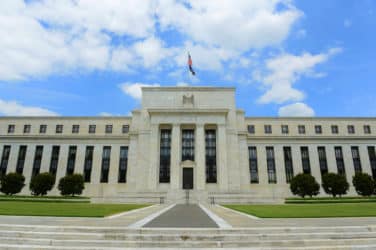

Sustainable bond issuance is expected to grow 10% year-on-year to reach €900bn in 2025, according to Crédit Agricole CIB’s ESG fixed income research team.
The team said in a blog that sustainable bond issuance rose to €820bn by mid-November 2024, compared to €790bn in 2023.in spite of soft momentum around environmental, social and governance (ESG) investment last year.
Green bonds represented the majority, 82.6%, of issuance which is expected to continue this year, and non-financials are also expected to continue as the biggest share of issuers. Corporates will need clear regulatory and funding frameworks to support low-carbon technology scale-ups to generate more robust supply according to the bank.
“The coming into effect of the EU Green Bonds Standard (EU GBS) will be one of the main developments to follow in 2025, although Crédit Agricole CIB ESG Fixed Income Research team does not foresee a strong adoption at the beginning,” said the blog. “The first impact on volumes will be clearer by 2026-2030.”
Damien de Saint Germain, head of credit research & strategy at Crédit Agricole CIB, said in a statement that regulation, particularly in Europe, will continue to play a key role, especially as the carbon border levy (CBAM) takes place in 2026.
“In the credit market, as greenium has continued to reduce with investors’ focus skewed onto yield, more disclosures (CSRD) should pave the way for more differentiation between leaders and laggards,” he added. “In that respect, 2025 is set to be a key milestone in assessing the credibility of the green trajectories embedded in 2030 sustainable targets.”
Consultancy Firebrand Research said in its predictions for 2025 that Asia will continue to dominate sustainable opportunities.
Virginie O’Shea, founder and chief executive of Firebrand Research, said in the report: “The region’s markets see these investments as a potential for global growth and climate risk mitigation. Expect more focus and progress in 2025.”
She continued there may be a slowdown in the US as the incoming administration is hostile to ESG and sustainability topics, so there will be pressure on asset managers to deprioritize these investments. In addition, political changes in the European Union has led to less representation for green parties within the legislatures.
O’Shea said: “This could mean less prioritisation of ESG regulations and the attitude of the US may also have an influence on regional demand.”
The US SIF Trends Report 2024/2025, the 15th edition of this biennial survey, found that 73% of respondents expect the sustainable investment market to grow significantly in the next 1-2 years, driven by client demand, regulatory evolution, and advances in data analytics.
The report said: “This is still the case, despite political headwinds and regulatory scrutiny.”
Natural capital
On 9 January 2025 ISS ESG, the sustainable investment arm of ISS STOXX, released the inaugural study from its Natural Capital Research Institute, The Root Cause of Nature Loss: Forests, Why They Matter, and How to Assess Deforestation Risk in Investment Portfolios through Nature-Related Data.
The institute was launched in 2024 to advance the understanding of how nature affects businesses and investment portfolios and to help institutional investors incorporate nature-related considerations in their investment process.
Institutional investors are increasingly aware of the “twin crises” of biodiversity loss and climate change and that one cannot be solved without addressing the other, according to the report. ISS ESG found that transition risk is most urgent for investors, with regulatory pressure on companies and investors to reduce exposure to commodities from newly deforested areas in their supply chains.
The report highlighted that the most prominent effort is the European Union’s Deforestation Regulation (EUDR) which is due to be implemented by the end of 2025 for large enterprises and by 2030 for micro and small enterprises.
Mirtha Kastrapeli, global head of natural capital, and head of ISS STOXX’s Natural Capital Research Institute, said in a statement that the study highlights that mitigating and halting deforestation risk across public equity portfolios will be a dynamic journey.
“Although challenges persist, opportunities are growing rapidly, with data around nature-related dependencies, impacts and environmental performance becoming available,” she added. “Further, nature data architecture at the asset level is growing, while nature-based solutions practices, such as regenerative agriculture and sustainable land management are expanding.”









